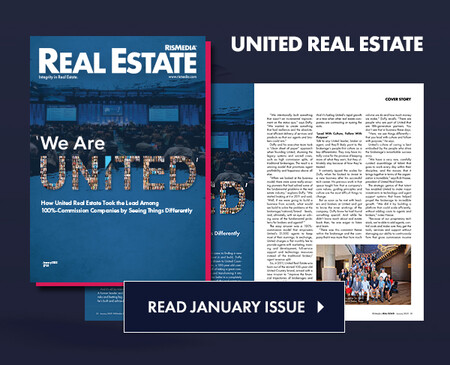By Jessica Foster
RISMEDIA, June 19, 2008-(MCT)-Walk into Renee Pratta’s shop in North Myrtle Beach, and you might think you’re in a furniture store. The rooms are chock-full of home decor: pillows, artwork, mirrors and faux plants in every color, shape and size. But the items are not for sale. They float from house to house of Pratta’s clients, who hire her to do home staging, interior redesign and color consulting through her business Renewed Rooms.
Pratta discovered her knack for staging after she got her real estate license about six years ago.
“I sold homes and quickly realized it wasn’t selling I enjoyed, it was the fluffing of the model homes,” she said.
Pratta is now a licensed stager through Interior Redesign Industry Specialists and recently was among the top three stagers in the nation in the Real Estate Staging Association’s Stager Idol contest. She’s done about 40 houses since launching the business in 2005 during the height of the real estate market.
She took some time recently to talk about how business has changed as the economy has worsened.
Question — What is home staging?
Answer — Home staging is where you’re preparing your house to be ready for sale before it goes on the multiple listing service, before you put a picture online. They should go through every room, every inch of space and declutter, depersonalize, update outdated spaces. Even if it’s a sofa that has holes in it, just get a slipcover and put a slipcover on it with some updated colors or pillows just to highlight it. You try to keep a neutral palette. Neutral doesn’t necessarily mean no color, but you do try to keep it neutral so if you’ve got black bedroom walls you might want to think about lightening those walls. Sometimes, though, it can work, it just depends on the space. … You’re trying to appeal to the most people that could purchase your home.
Q. — How is the home staging business going here these days?
A. — Along the Grand Strand, it has gone down a little bit because of the market and the way it’s impacted, and everybody is still trying to understand what is going on. I know there’s a lot of inventory still out there. It is starting to move though, but it’s at different price points. My personal opinion is anything that’s higher than $600,000 or $700,000 are the ones that are having a rougher time selling. Anything that’s lower than that, $300,000 and less are the properties that are moving. So I mean, my goal is to really educate the consumer or the seller and the Realtor. Lots of Realtors really still haven’t factored that in as a regular part of their marketing of a property: that home staging is really critical when you’re trying to sell the home.
Q. — How much inventory do you have?
A. — I have a lot of inventory for vacant home staging. I probably have 10 homes worth of furniture. I have six homes staged right now. Several of them are coming up to be destaged but summer is always slow anyway.
Q. — What kind of training did you go through to become a stager?
A. — I went to a five-day training class through Interior Redesign Industry Specialists. It was hands-on. The first day you were out there with your class and they set up at least four projects for you to do while you were there, and they were a combination of staging for people that had homes for sale and redesign, which is where you just take what people own and repurpose it and shop their home for new things. It is always fun to watch people come in and see their homes, what you’ve done. It is exactly what you see on TV. They are beside themselves. They’re screaming, they’re crying. Sometimes they’re very quiet, you get very nervous because it’s so much to absorb, but it’s really a lot of fun. They think you can’t do anything different with what they have. For most people that’s where the sofa was, that’s where it should be, and it shouldn’t be anywhere else, and they’re really amazed at what you can do.
Q. — What’s the biggest mistake people make?
A. — Clutter is part of it. You have to now think that this isn’t your house anymore. … You think of a home, you’ve got to think of it as a house and you have to think of it as a commodity. If you want the most money for that house, you’re going to have to package it to make it appealing to the most people just like Coca-Cola packages their products and everybody else, when you go into those grocery stores or retailers. Think about a retailer and the windows that they present. That’s what you’re doing, you’re merchandizing your home.
Copyright © 2008, The Sun News, Myrtle Beach, S.C.
Distributed by McClatchy-Tribune Information Services.










